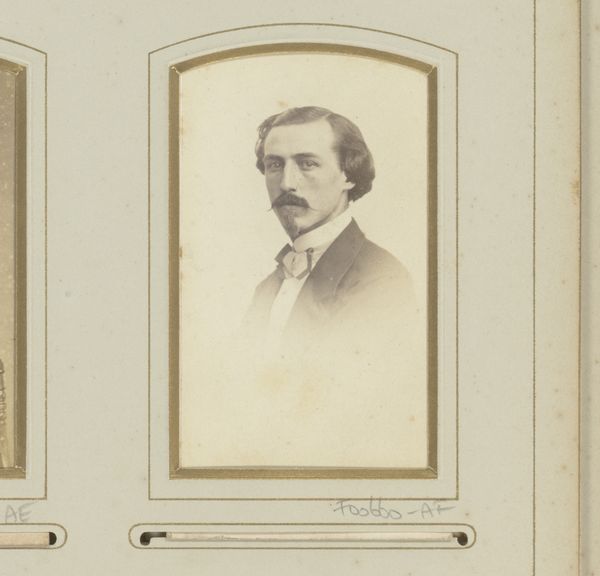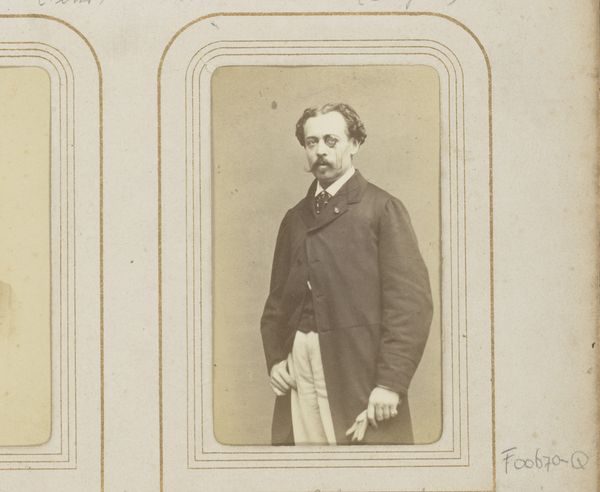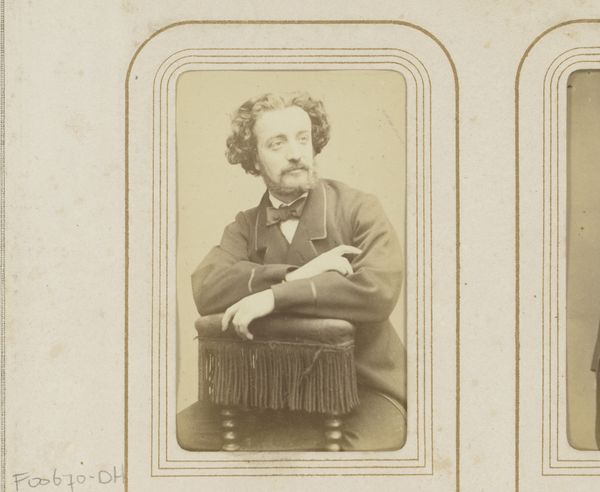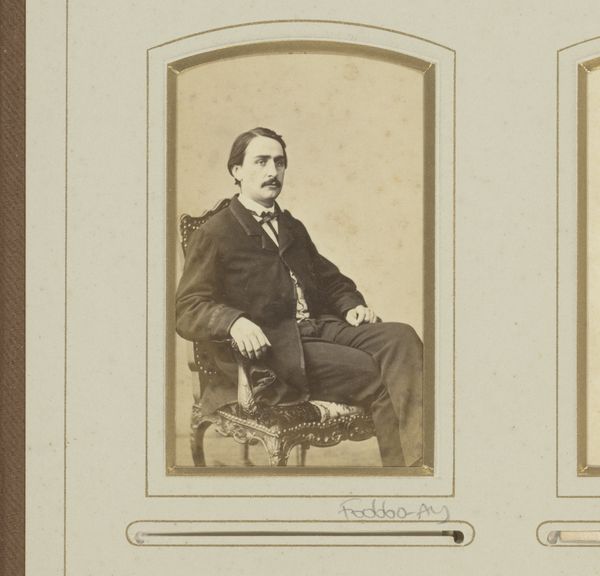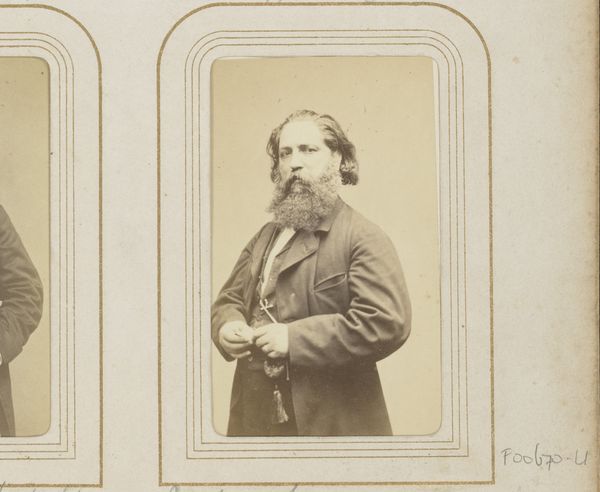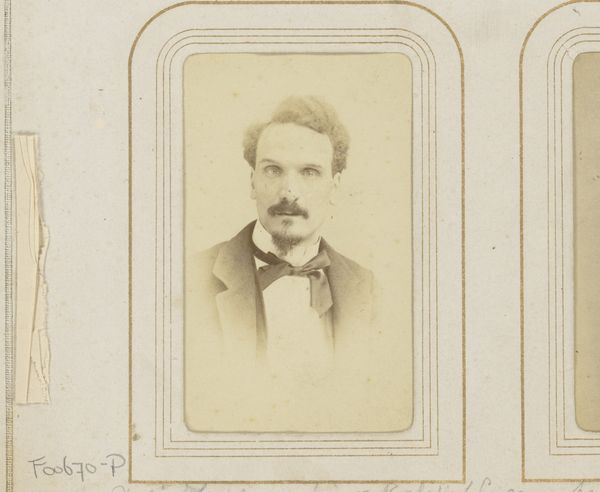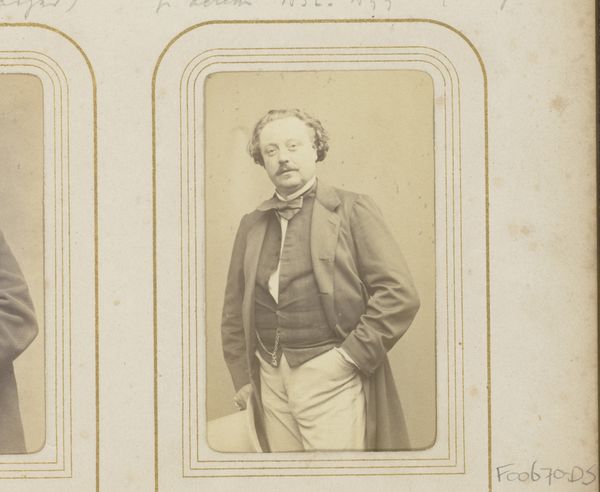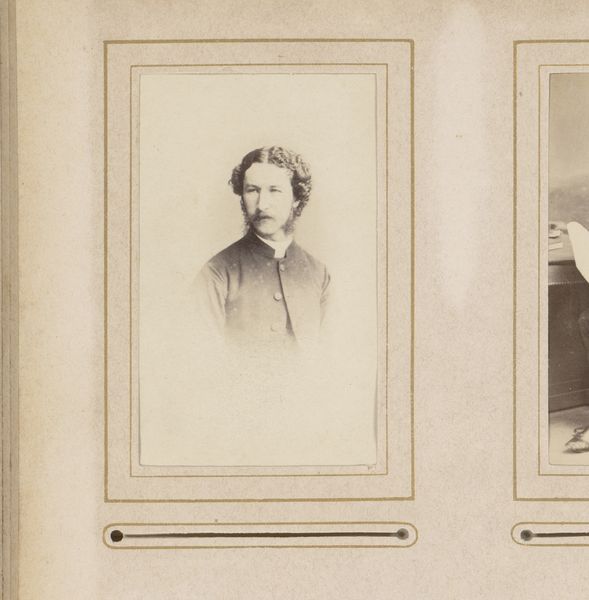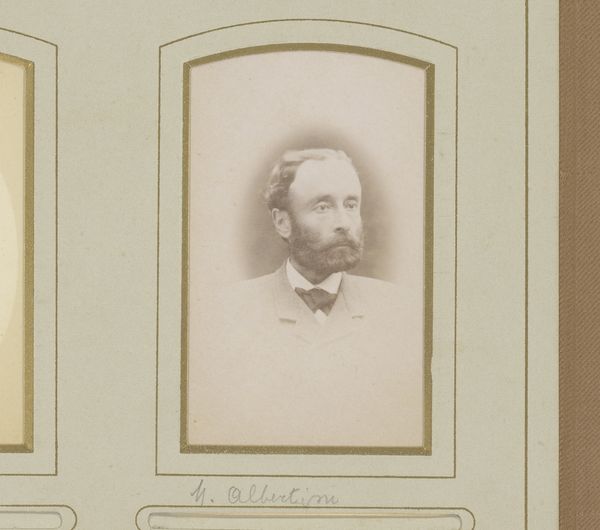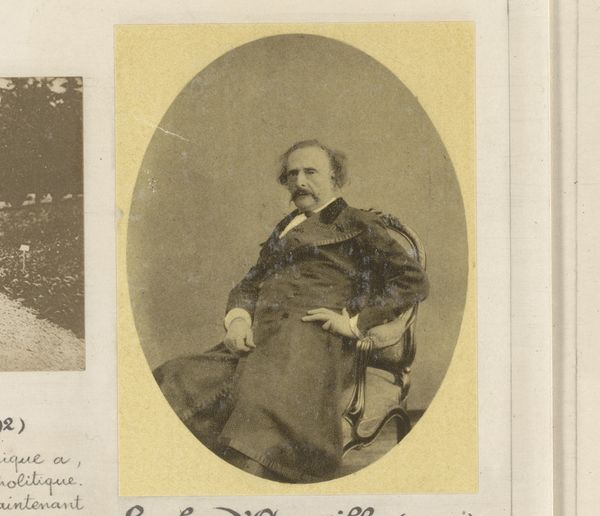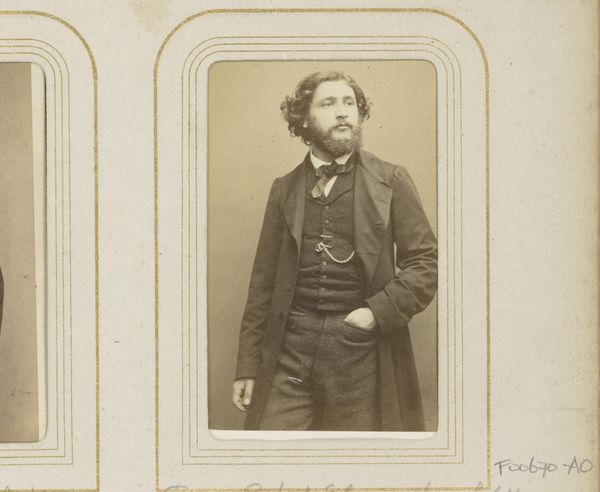
daguerreotype, photography
#
portrait
#
daguerreotype
#
photography
#
historical photography
#
19th century
#
realism
Dimensions: height 84 mm, width 51 mm
Copyright: Rijks Museum: Open Domain
Curator: Here we have "Portret van een zittende man met snor," or "Portrait of a Seated Man with Mustache," a daguerreotype likely created between 1853 and 1880, by Joseph Dupont. Editor: Wow, he looks so serious, almost as if he's judging me. It has a wistful quality, like an old daguerreotype pulled from someone’s dusty attic, carrying a silent story. Curator: The subject’s seriousness certainly speaks to the conventions of portraiture during this period, where gravitas was prized. Photography at this time was still a fairly novel technology, primarily accessible to the middle and upper classes who wished to capture their image in a way previously reserved for painted portraiture. Consider that for many sitters this may have been the only time their image was permanently captured. Editor: You know, I love the detail in his waistcoat; there's an interesting tactile sense given the overall muted tones, and the light highlighting that little bit of watch chain! It makes me wonder what he was thinking about right before the photo. Curator: Daguerreotypes were renowned for their clarity and minute detail. We might explore the portrait as a reflection of societal roles and class distinctions inherent within burgeoning photographic practices, examining it in relation to gender, representation, and the cultural norms. He embodies a particular kind of masculine identity typical for the era. Editor: Perhaps a powerful businessman, or even an up and coming intellectual, wanting to solidify their role in the world, even in such a still manner! It also occurs to me, the fact that his jacket sleeves seem a bit big lends an odd, timeless touch! Curator: That touches on photography’s democratization and standardization in portraiture versus traditional painting, where certain sartorial touches might convey status in slightly different ways. Thanks to cheaper reproduction methods, a "standard" portrait becomes accessible beyond aristocracy, yet there were still specific codes governing presentation and decorum. Editor: Absolutely! Thinking of it that way definitely gives me something new to think about. A lovely way to frame this slice of history, thank you! Curator: My pleasure! Context and artistic appreciation constantly interplay.
Comments
No comments
Be the first to comment and join the conversation on the ultimate creative platform.
